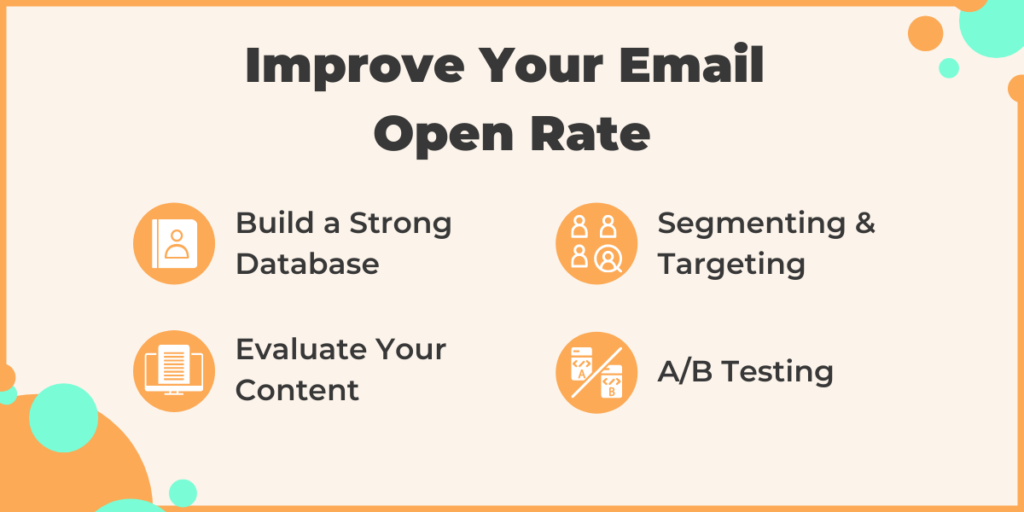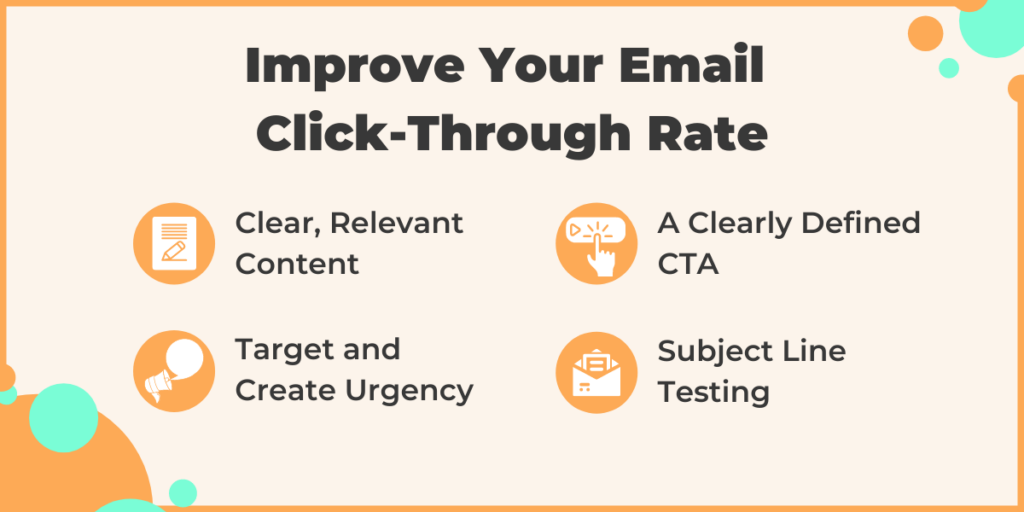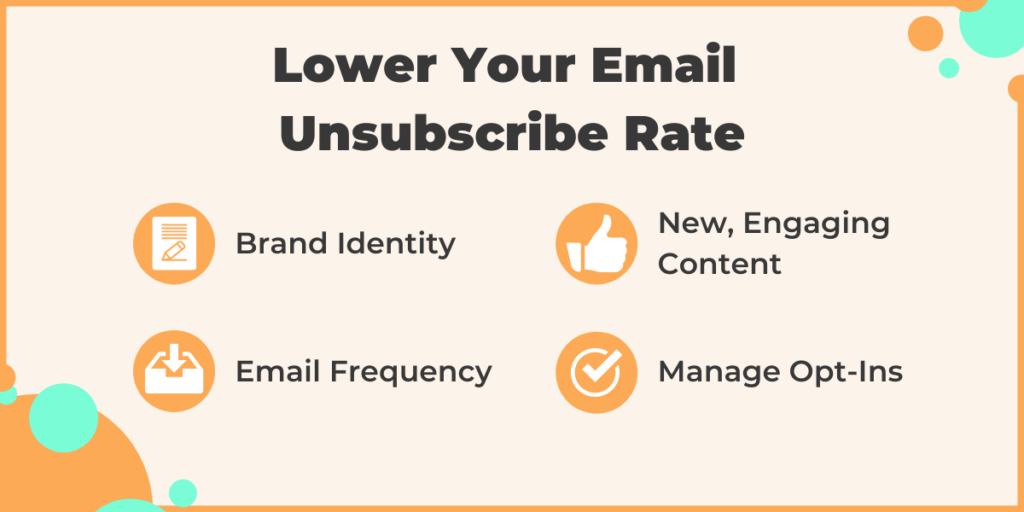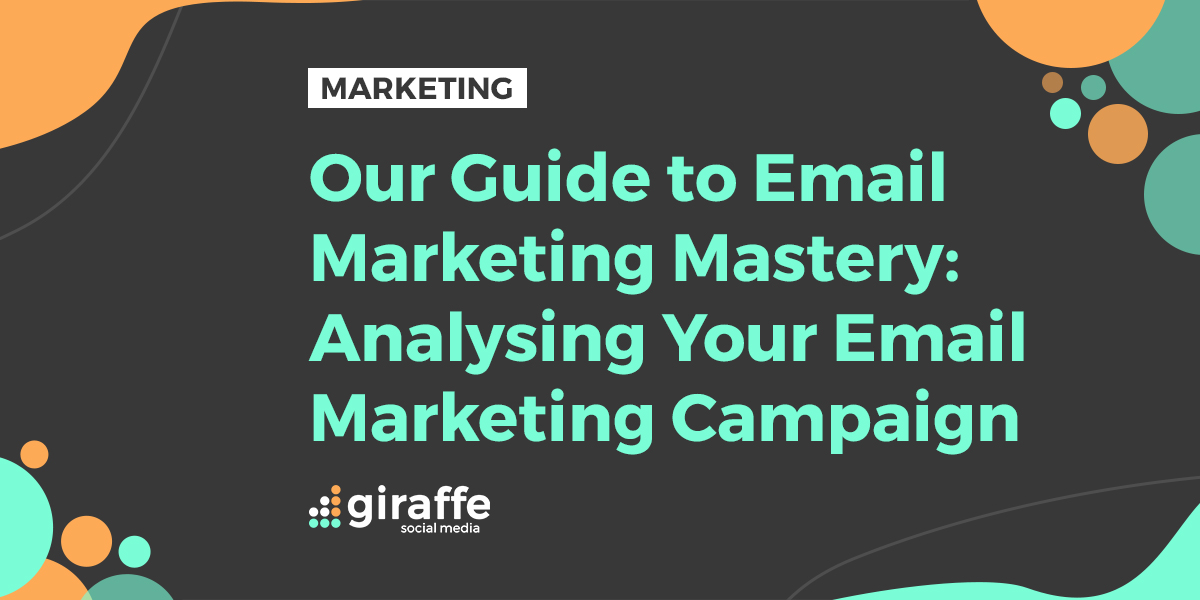Email marketing should be an integral part of any digital marketing strategy, especially for small and medium-sized businesses. We’ve created our guide to email marketing mastery to give you a better grasp of the finer details and help you tap into your business’s potential. In this instalment, we’re focusing on email marketing campaign analysis and which metrics you can use to update your strategy.
Why Should I Analyse My Email Marketing Campaign Results?
As with all marketing strategies, you should be using your campaign data/results to inform your strategic decisions – listen to your audience. Using your email marketing metrics to inform your campaign strategy will help tailor your campaign to your audience’s interests and give you an idea of what performs well (and what doesn’t). A great email marketing strategy should constantly be evolving and therefore you need to be analysing every measure you take and the results you see.
Open rates
Your email open rate is the “number of unique opens your email receives in a campaign, expressed as a percentage,” calculated by dividing the number of (unique) opens by the number of delivered emails. For example, if your email successfully delivers to 200 subscribers, and 45 open it, the open rate is (45/200) * 100 = 22.45%.

Average email open rates can vary depending on the industry and type of business, but the average email open rate across all industries is 17.92%. If after investigating your industry’s average you find that you’re consistently hitting below the standards, and your business targets, there are plenty of factors that could be contributing to this.
First, you should consider the strength of your database(s) and subscriber list. Is your database up to date and clean? Purchased and rented databases are often outdated, so it’s usually better to build your sign-ups organically.
Are you targeting/segmenting your audience correctly so that the information is reaching the correct people? For example, if your email marketing campaign promotes spa break offers in Manchester, but you fail to segment your subscribers by location, your open rate and response will suffer due to a lack of relevance.
If you cannot identify any issues in your database, evaluate the content of your email. Research shows that ‘sender name’ and the subject line are the two most important determining factors of open rate, with 45% of subscribers likely to open an email based on who it’s from, and 33% opening based on the subject line. So, is your subject line provoking intrigue and offering value? Is the ‘From’ field clear, personal, and likely to get opens? Have you optimised your email campaigns to bypass spam filters?
You can utilise A/B testing (also known as split testing) to send two versions of the same email to segments in your subscriber list. Experiment with different sender and subject line fields, or try out altered copy or creatives, and analyse the results to see which performs better.
Click-throughs
Email click-through rate (CTR) measures “how many emails resulted in a recipient clicking your call-to-action (CTA) link,” expressed as a percentage. Research from email marketing platform MailChimp showed that the average CTR across all industries is 2.62%, with the highest CTRs going to Hobbies (5.01%), Media and Publishing (4.62%), and Government (3.99%).

If your open rates are good but you’re seeing poor click-through rates, the problem likely lies within your content. From unclear messaging to stale copy, your content needs to reflect your main objective and feature a clearly defined CTA. HubSpot recommends the following 11 tips to increase your CTR:
- “Test your subject lines,
- Less is more with copy,
- Include social sharing options,
- Segment your email lists,
- Offer targeted content,
- Personalise your emails,
- Remove distractions from the email,
- Slap your reader across the face with your call-to-action,
- Include a P.S.,
- Create a sense of urgency,
- Make sure your emails are mobile optimized.”
Express Writers recommends writing your email copy in the second person, as well as keeping all the content relevant and related to the subject line. You’re more likely to get click-throughs when your content and CTAs are relevant to your readers/the purpose of the email.
Unsubscribe Rate
Multiple countries have rules and regulations on email recipients’ rights to actively “withdraw consent” from any email marketing they receive. Most email marketing platforms and builders will by default include unsubscribe and/or marketing preferences options to allow recipients to remove themselves from your subscriber list or change the emails they receive from you. Your campaign’s email unsubscribe rate thus refers to the percentage of “email recipients who clicked on the unsubscribe link inside your email.”
Typical unsubscribe rates average at 0.49%, with the B2B sector (non-retail) featuring a higher average unsubscribe rate at 1.08%, and Public Relations coming in at a low 0.10% (Smart Insights).

A high unsubscribe rate is an indication that it’s time to take stock of the identity of your emails, possibly considering a re-brand/refresh. If you aren’t offering something exciting, new, and interesting in every email, your unsubscribe rate may rise as customers become disengaged.
Set your delivery expectations of email frequency and timing and try not to exceed these. If your customers opted to receive an email once per month but suddenly start receiving them weekly, they’re more likely to unsubscribe or change their preferences. Likewise, sending too few emails could disengage your customers if they haven’t heard from you in a while, perhaps causing them to unsubscribe the next time they see an email from you. In all cases, make sure your customers are aware of email frequency and send updates notifying them of any expected changes in delivery.
Sleeknote highlights the importance of determining whether single or double opt-ins suit your email marketing efforts best. Single opt-ins are a “one-step process and only require a person to enter their email address one time in the signup box on a website.” However, double opt-ins require a “two-step process where a person first enters their email in the signup box [then] receive a confirmation email where they must click to confirm that they want to subscribe before being added to the list. “
Single opt-ins are easier on the user and help you grow your subscriber list faster, whereas double opt-ins are great for enhancing the quality of your list. Your best bet may be to use a combination of single and double opt-ins, segmenting your audience and targeting different email campaigns depending on these factors, to ensure maximum reach and engagement with your email marketing.
Maintaining a healthy recipient list
A major part of email marketing campaign analysis is ensuring that your database is of the best possible quality. There are several measures that you can take to build a healthy, engaged subscriber list.
For fresh sign-ups, consider adding a newsletter sign-up CTA to your social media posts, content marketing, and other areas on your website. If you are looking to reinvigorate a stale old database, consider sending an opt-in email for a new, specialised newsletter to encourage engaged sign-ups. In any case, make sure to make clear the value that your email marketing will provide and ensure the sign-up process is as efficient as possible.
We hope that our Guide to Email Marketing Mastery has helped you get to grips with email marketing. Please get in touch if you need any help with your content or email marketing today.
Previous Giraffe Social Media Email Marketing Mastery Parts:
Part One – Why Email Marketing?
Part Two – Building Your Recipients
Part Three – Constructing Your Email
Editor’s Note: This article was published in November 2019 and has been updated for accuracy and relevance in July 2021.






